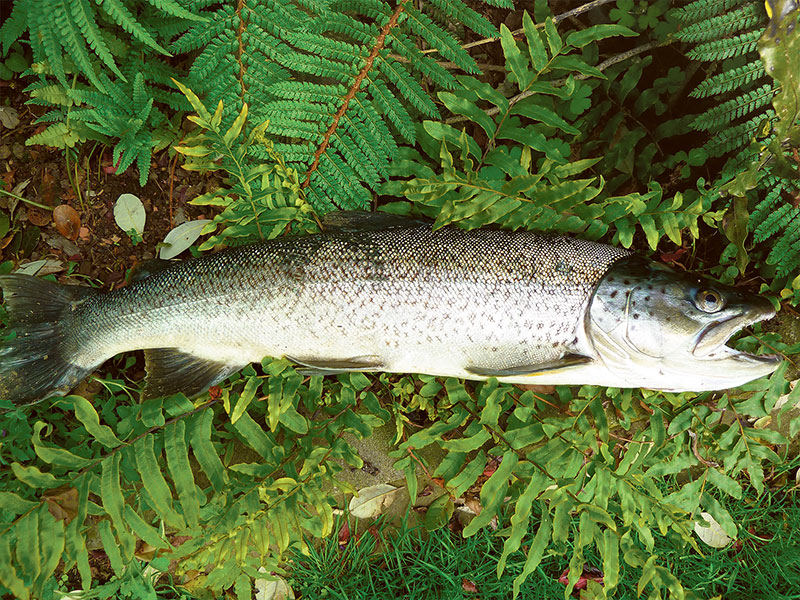Fishing tip: Black trout tactic for murky water
3 min read
Murky water and a Hobnail Boot fly yielded this fine trout for the writer from the local river, which is still murky but clearing after headwater rain. Photo: Tony Orman
Chances are with abnormal spring and early summer rains, your favourite trout water has been running high and brown. Don’t despair; when the river then begins to drop and clears to just slightly discoloured – well, murky – water, it’s a good time for both spin anglers and fly fishers to get out with a black lure.
Yes, black is the optimum colour for those murky waters, particularly on brown trout rivers.
For spin anglers, the best lure to use is a good old fashioned Black Toby. You don’t need to cast it far, as trout in discoloured water seem to like to get into shallower water, probably because they can sight any drifting food easier. So just work the edge of the current from the ‘eye’ of the pool where the rapid enters and then down the edge of the current, with short accurate casts.
For the fly fisher, any wet fly lure of black colour is a good bet. A Black Hairy Dog, for example, or for me, it will be a wet fly lure, curiously named Hobnail Boot.
With a floating line, fish it across and down from the ‘eye’ of the pool and along the shallow edge of the current. Probably bypass the deep parts of pools, as the water depth will make it harder for the trout to see your lure. Try the tail of a pool, as it is shallow.

As for the unusually named Hobnail Boot fly, it was the creation many years ago of the late John Morton of Christchurch and his friend Bert Arthur. Good friend John was a fly tyer of immense skill and a renowned and accomplished fly fisher. John and Bert devised the fly, made from the black fur on a possum tail, to catch trout. The trout were proving difficult to catch during the day and even after dark at a stream entering Canterbury’s Lake Ellesmere.
To their delight, the fly was a great success the night it made its debut. The fly remained unnamed. Then John tried it a second night. While several other anglers remained fishless, John hooked trout after trout and amid much splashing, landed several.
A voice from the line-up of other anglers, snorted and humorously exclaimed, “Who the hell is splashing around down there? Sounds like he’s got hobnail boots on!”
And that was it; the fly was christened.
The Hobnail Boot is easy for a fly tyer to tie, even a 10- thumbed one like me.
I tie the Hobnail Boot on a size 8 hook usually but sometimes on a 6. If you don’t tie the flies yourself, get a friend in your local trout fishing club to whip up a couple. The tail is a wisp of black possum fur, the body red or green wool, or chenille, and possum fur is sparsely slanted back as a ‘hackle’. The photo above will give you a better idea.
Read more: Fly tying tips: how to tie the copper nymph
Read more: Winter fishing tips: new fly-tying ideas
Read more: Trout flies: keeping it simple
In New Zealand, possum fur is readily available for next to nothing. Sources can be by shooting one or two at night, a local possum fur processing factory if your area has one, or off a not-too-mangled roadkill.
John told me that placing a fresh, skinned tail in the oven at very low heat overnight works. The tail’s skin will dry out solid and can be stored for years.
Alternatively, skin the tail and tack it out, skin side up, on a board. Mix up a 50–50 mixture of kerosene and baking soda and rub that on. The next morning, repeat, and then do a third time. The tail should be fine for years.



